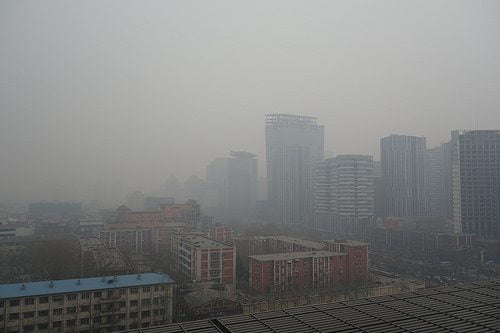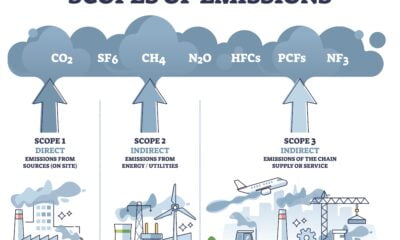

Environment
China dispatches pollution inspectors as Beijing smog crisis continues
After enduring five days of choking smog, Beijing is to remain in a state of high alert as dangerous levels of pollution are forecast to hang over the city for the next few days.
The Chinese capital issued its first ever orange alert – the second most severe ranking out of four in a recently introduced pollution monitoring plan – on Thursday.
The move followed the detection of the particulate matter PM2.5 at a concentration of 237 micrograms per cubic metre – nine times the levels recommended as being safe by the World Health Organisation (WHO) – near Tiananmen Square.
Forecasters have now warned that the smog is unlikely to clear before Thursday.
The prolonged nature of this latest case of smog prompted the government to send inspectors to the capital and other affected areas on Sunday.
China’s environment ministry said that the inspectors would be dispatched to factories in Beijing, Tianjin city and the Hebei province to check for violations of emissions standards.
Under a state of orange alert, some manufacturing plants are required to reduce production in order to cut emissions, while demolition work, barbecues and fireworks are all banned.
Though the warning system has only recently been introduced, the authorities have faced criticism over its implementation.
Earlier this month, PM 2.5 levels exceeding 500 micrograms per cubic metre were detected in the capital, yet the authorities only issued the mildest, blue-level alert.
In January, the second-mildest yellow alert was issued when PM2.5 levels reached 671 – 26 times the WHO’s recommended level.
A red alert would require all traffic to be cut, with cars with even and odd numbered license plates allocated alternative days to stay off the road, while all schools would be suspended.
Some observers have questioned if the government would be willing to enforce such disruption, while some have complained that the policy does little to reduce the scale of the crisis.
“When the emergency plan is activated, it means the pollution has hit a certain level, and the relief measures can only stop the situation from worsening,” Ma Jun, director of the Beijing-based Institute of Public and Environmental Affairs, tells The Global Times.
China’s former health minister Chen Zhu recently estimated that air pollution – the fourth biggest killer in Beijing – accounts for up to 500,000 premature deaths in China each year.
Last year, an unnamed eight-year-old girl become the youngest person in China to be diagnosed with lung cancer, with her doctor saying that air pollution was to blame.
In response to the crisis, and China’s growing contribution to climate change, the government has embarked on the world’s largest ever renewable energy drive.
A WWF report published last week estimated that China could generate 80% of its electricity from renewable sources by 2050.
Further reading:
Beijing issues first ‘orange’ pollution warning amid smog crisis
Report: China can reduce emissions and grow economy simultaneously
China sets up $1.65bn fund to solve air pollution
































